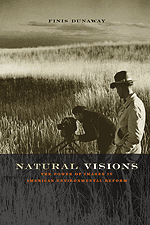Those powerful images of the national parks
 If you saw just one episode of the PBS series The National Parks: America’s Best Idea, or if you saw them all, you saw certain images repeatedly: brown bears catching salmon at Brooks Falls, a wolf loping across a meadow in Denali, bison lumbering through the snow of Hayden Valley, and Mt. McKinley rising to improbable heights above a cloud bank. These signature images are like a visual glue that Ken Burns used to hold together the multitude of places and people covered in the National Parks series.
If you saw just one episode of the PBS series The National Parks: America’s Best Idea, or if you saw them all, you saw certain images repeatedly: brown bears catching salmon at Brooks Falls, a wolf loping across a meadow in Denali, bison lumbering through the snow of Hayden Valley, and Mt. McKinley rising to improbable heights above a cloud bank. These signature images are like a visual glue that Ken Burns used to hold together the multitude of places and people covered in the National Parks series.
These indelible character of these signature images, and all the magnificent images in the series, attest to the remarkable power that photographic images of natural scenery have to create a compelling story and and establish cognitive and emotional connections with the parks as well as with the people who have preserved them. The National Parks series becomes the latest in a long chain of photographic imagery, including the work of Ansel Adams and New Deal filmmakers, to picture nature as a place of grace for the individual and the nation.
This is the subject of a book we published a few years ago, Natural Visions: The Power of Images in American Environmental Reform by Finis Dunaway. He tells the story of how visual imagery shaped modern perceptions of the natural world. By examining the relationship between the camera and environmental politics through detailed studies of key artists and activists, Dunaway captures the emotional and spiritual meaning that became associated with the American landscape.
We have an excerpt from the book which discusses the role of coffee-table picture books, especially those published by the Sierra Club under the leadership of David Brower, in creating an environmental consciousness that protected natural areas across the country. One book, This is Dinosaur, played a significant role in the battle over damming the Green River in the area known as Echo Park, in Dinosaur National Monument—a story told in Episode Six of the series. This is Dinosaur, edited by Wallace Stegner, who first called the national parks “the best idea we ever had,” was part of the successful campaign to galvanize public and Congressional opinion and defeat the Green River dam project.